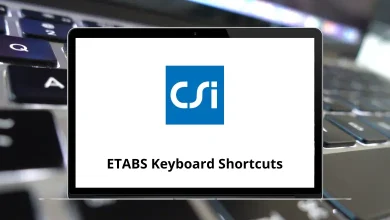What is Adobe Flash? What is it used for?
Adobe Flash, formerly known as Macromedia Flash before Adobe acquired it in 2005, was a powerful multimedia software platform used for creating animations, vector graphics, web applications, games, and interactive content. It worked through the Adobe Flash Player, a browser plug-in that enabled users to view rich media content directly in their web browsers.
Table of Contents
In the late 1990s and early 2000s, Adobe Flash was a dominant tool for producing interactive websites and online videos. Many popular browser-based games, animated cartoons, and multimedia presentations were built using Flash technology. However, with the rise of HTML5, CSS3, and JavaScript along with security concerns and lack of mobile support Adobe officially ended support for Flash on December 31, 2020.
Features of Adobe Flash
Adobe Flash offered a wide range of features that made it a preferred choice for multimedia developers during its peak years:
1. Vector-Based Graphics
Flash used vector graphics, allowing animations and visuals to scale without losing quality. This made content lightweight and efficient for web delivery.
2. Rich Animation Tools
It provided a robust timeline and keyframe-based animation system. Developers could create frame-by-frame animations, motion tweens, and shape tweens with ease.
3. ActionScript Programming
Flash included ActionScript, a scripting language used to add interactivity, control animations, and create complex web applications and games.
4. Audio and Video Integration
Flash allowed embedding of audio and video content, supporting formats like MP3, FLV, and later MP4. It was widely used for streaming video content before HTML5 became standard.
5. Cross-Platform Compatibility
Content created with Flash could run consistently across different browsers and operating systems through the Flash Player plug-in.
6. Interactive Elements
Developers could build interactive buttons, menus, quizzes, and games, making websites more engaging.
7. Lightweight File Sizes
Flash files (SWF) were generally small in size, enabling faster loading times even on slower internet connections.
8. Integration with Adobe Tools
It integrated well with other Adobe products like Photoshop, Illustrator, and After Effects, allowing easy import of assets.
Related: 60 Adobe Flash Shortcut Keys
What is Adobe Flash Used for?
During its active years, Adobe Flash was widely used in various industries for multiple purposes:
1. Web Animations
Flash was the go-to solution for creating animated banners, interactive infographics, and visually rich website components.
2. Online Games
Many browser-based games, especially in the early 2000s, were built entirely with Flash due to its interactivity and performance capabilities.
3. Streaming Video
Before HTML5 video became standard, platforms like YouTube initially relied on Flash Player to deliver videos.
4. E-Learning Content
Flash was popular in educational technology for creating interactive e-learning modules, quizzes, and training simulations.
5. Interactive Applications
It was used to develop rich internet applications (RIAs) with engaging user interfaces.
6. Animated Advertisements
Flash made it easy for advertisers to create eye-catching animated ads that could run on various websites.
The Decline and End of Adobe Flash
Although revolutionary in its time, Flash faced several challenges:
- Security vulnerabilities made it a frequent target for hackers.
- High resource consumption, which affected device performance.
- Lack of mobile device support, especially after Apple chose not to support Flash on iOS.
- Emergence of HTML5, CSS3, and JavaScript, which provided a safer, faster, and mobile-friendly alternative.
Due to these reasons, Adobe announced the end-of-life for Flash, and as of 2021, all major browsers have removed support for it.
Conclusion
Adobe Flash played a significant role in shaping the early internet by enabling rich multimedia experiences. It was a pioneer in web animation, online gaming, and interactive applications. While it is no longer supported, its legacy remains in the evolution of modern web technologies. Developers today use HTML5 and related tools to create the kind of engaging, interactive experiences that Flash once dominated.





